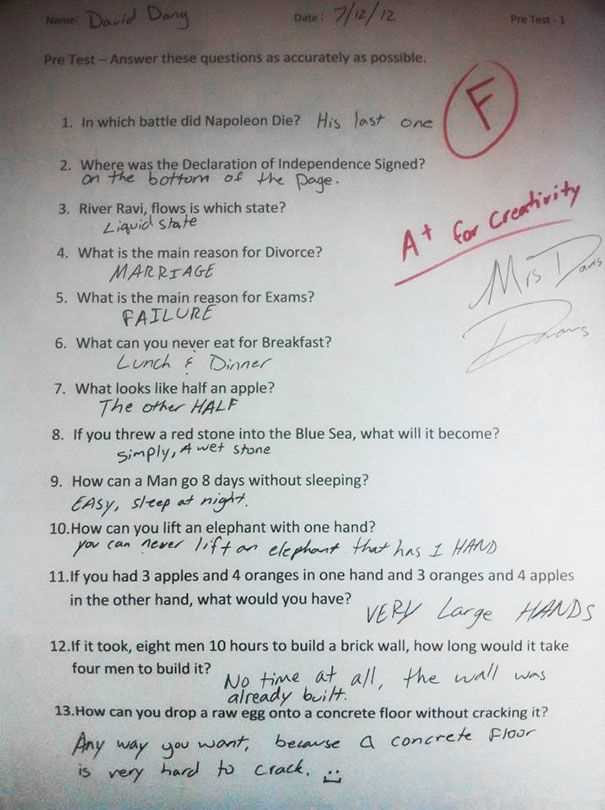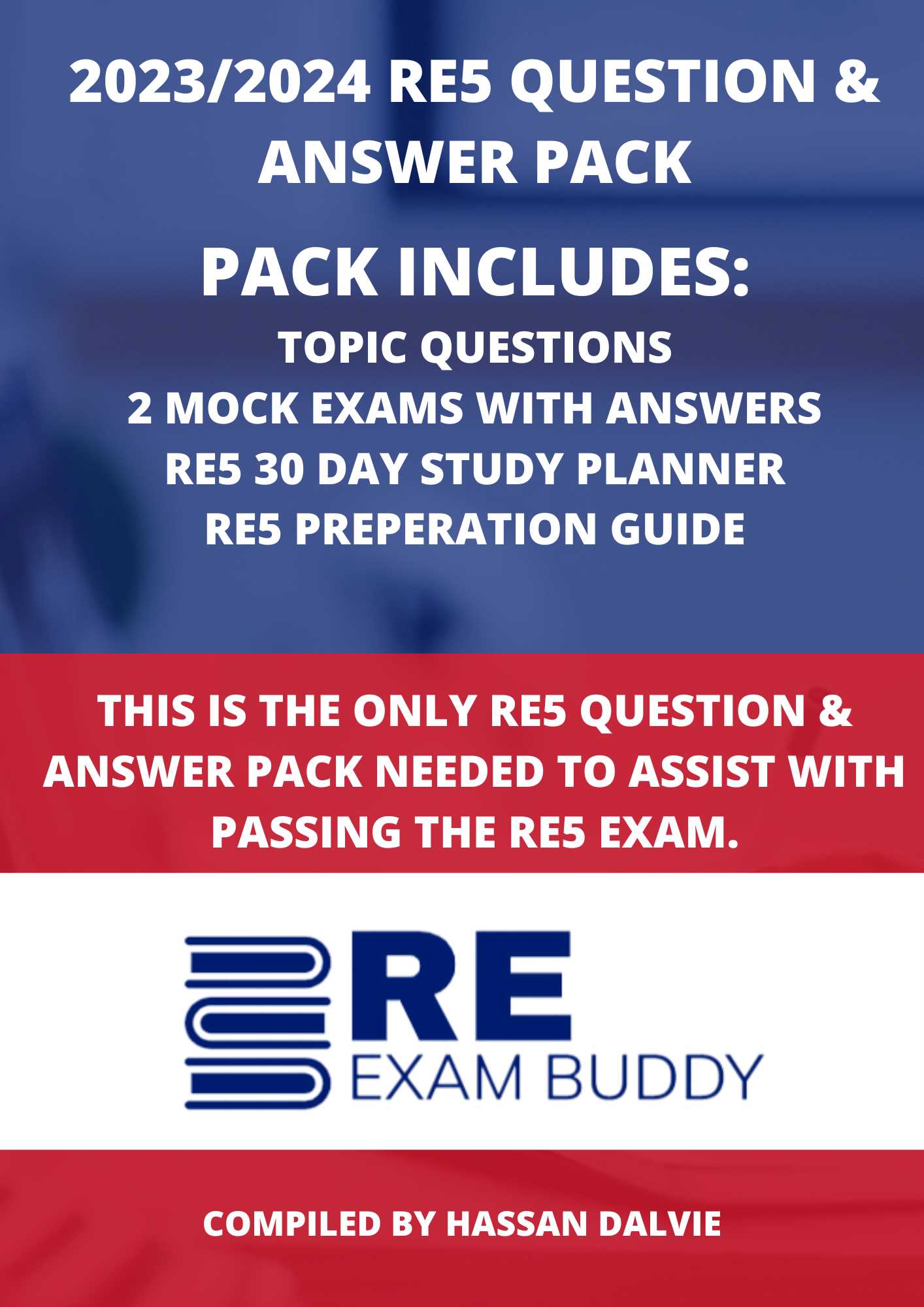
Success in any test or assessment comes down to how well you convey your knowledge and skills within the given timeframe. Being able to express your thoughts clearly, confidently, and systematically is key to achieving top marks. Developing a structured approach to handling the tasks at hand can make a significant difference in your performance.
Throughout this guide, we’ll explore various techniques to enhance your ability to tackle challenges and demonstrate your understanding. From reading instructions carefully to managing time efficiently, every aspect plays a crucial role in maximizing your chances for success. Preparation and focus will help you stay ahead, regardless of the difficulty level or subject matter.
How to Answer Questions in Exams
To perform well in any assessment, it’s essential to communicate your knowledge effectively. A structured and clear approach allows you to showcase your understanding in the best possible way. Whether you are tackling multiple-choice, short-answer, or essay-style tasks, knowing how to organize your thoughts and express them efficiently is crucial.
Start by carefully reviewing each prompt to fully grasp its requirements. This ensures that you focus on what’s being asked and avoid unnecessary information. Once you understand the task, break it down into manageable parts and focus on delivering concise yet comprehensive responses. Using examples or explanations to support your points can further strengthen your argument and demonstrate deeper insight.
Understand the Question Before You Start

One of the most critical steps in any assessment is ensuring that you fully comprehend the task at hand. Rushing into a response without a clear understanding can lead to irrelevant or incomplete answers. Taking a moment to analyze the prompt carefully sets a strong foundation for success.
Here are some key strategies to help you gain a clear understanding:
- Read the prompt multiple times to grasp all aspects of what is being asked.
- Highlight or underline keywords that indicate the focus of the task.
- Identify any instructions that clarify how your response should be structured.
- Take note of any specific criteria or limitations given, such as word count or format requirements.
By taking the time to understand the prompt fully, you ensure that your response is relevant and on target, which is essential for achieving the best possible result.
Time Management During Exam Writing

Efficient use of time is crucial when tackling any timed assessment. Being able to allocate sufficient time to each task ensures that you can complete everything to the best of your ability without rushing. Managing your time well not only reduces stress but also helps to focus your attention where it’s needed most.
Prioritize Tasks Based on Difficulty
At the start, quickly assess the difficulty of each task. Start with the questions or sections that you feel most confident about, allowing you to gain momentum. This approach prevents wasting time on difficult tasks at the beginning, ensuring that you don’t run out of time for easier ones.
Allocate Time and Stick to It
Set a specific amount of time for each section and adhere to it. Keep track of the time throughout, so you don’t spend too much on any one part. If you find yourself stuck, move on and come back later if time permits. This strategy helps to ensure all parts are addressed within the allotted time frame.
Highlight Key Information in the Question
In any timed assessment, identifying and emphasizing the most important elements of the prompt is essential for crafting a focused and effective response. By highlighting key information, you ensure that your effort is directed towards answering what is specifically asked, rather than getting sidetracked with irrelevant details.
Focus on Keywords

Start by scanning the prompt for keywords that indicate the core of the task. These words guide you in understanding what exactly is required. Common keywords might include:
- Define – Ask for clear and precise explanations.
- Compare – Suggests drawing similarities and differences.
- Evaluate – Requires you to weigh evidence and give an assessment.
- Discuss – Calls for a detailed exploration of various aspects.
Underline or Highlight Key Elements
As you read the prompt, underline or mentally highlight important instructions, dates, or specific terms that influence the direction of your response. This helps keep you focused on the critical points and prevents overlooking essential parts of the task.
Stay Calm and Focused Under Pressure
Maintaining composure in a high-pressure situation is crucial for success. When faced with a time limit and multiple tasks, stress can quickly take over, impairing focus and judgment. The ability to stay calm allows you to think clearly, manage your time effectively, and deliver well-structured responses.
Strategies to Keep Calm
- Take Deep Breaths – Deep, steady breaths can help reduce anxiety and improve focus.
- Stay Positive – Shift your mindset to a positive attitude by focusing on past successes and reminding yourself that you are prepared.
- Break Tasks into Steps – Instead of viewing the entire assessment as overwhelming, break it down into smaller, manageable tasks.
Maintaining Focus
- Prioritize Important Tasks – Focus first on tasks you feel most confident about to gain momentum.
- Minimize Distractions – Block out any irrelevant thoughts or distractions and focus solely on the task at hand.
- Keep a Steady Pace – Resist the urge to rush through sections; maintain a steady pace to ensure accuracy.
Break Down Complex Questions into Steps
When faced with a difficult or multi-part task, it’s important to break it down into manageable steps. By doing so, you can approach each part methodically, ensuring that nothing is overlooked and that your response is well-organized. This approach prevents you from feeling overwhelmed and helps you stay on track throughout the process.
Follow these steps to simplify complex tasks:
| Step | Description |
|---|---|
| 1. Identify Key Elements | Carefully read the task and underline the important aspects that require attention. |
| 2. Divide the Task | Separate the main question into smaller, more focused parts or sub-questions. |
| 3. Plan Your Response | Organize your thoughts by planning how you will address each part of the task step by step. |
| 4. Prioritize Sections | Decide which sections require more time or effort based on their complexity or point value. |
| 5. Review and Revise | Once completed, take time to review each section to ensure clarity and coherence. |
By breaking down a complex task into smaller steps, you ensure that each part receives the necessary attention, leading to a more thorough and focused response.
Provide Clear and Concise Answers
Clarity and brevity are essential when responding to any task. Providing straightforward, well-structured responses allows the reader to easily understand your main points. By focusing on key information and avoiding unnecessary details, you can communicate your knowledge effectively without overwhelming the reader.
Keep Your Responses Focused
- Avoid Over-explaining – Stick to the main point and provide just enough detail to support your answer.
- Be Direct – Get straight to the point without adding irrelevant information.
- Use Simple Language – Choose clear, simple words that directly convey your message.
Structure Your Responses Effectively
- Use Bullet Points – When listing multiple points, bullet points help to organize your thoughts clearly.
- Provide Examples – Use specific examples to back up your arguments, but keep them brief and relevant.
- Conclude Summarily – End your response with a short, clear summary of your main points.
Avoid Overcomplicating Your Responses
When tasked with providing a solution or explanation, it’s easy to get caught up in trying to cover every possible angle. However, overcomplicating your response can make it harder for the reader to follow your main points. Focusing on the essentials and keeping things simple often leads to a more effective and clear response.
Keep Your Ideas Simple

- Stick to the Basics – Focus on the most important elements of the prompt and address them directly.
- Avoid Unnecessary Details – Extra information might distract from the core of your response.
- Use Clear and Precise Language – Avoid jargon or overly technical terms unless they are essential to the task.
Be Concise and Focused
- Limit the Length – Avoid long-winded explanations and stay within the expected length or time frame.
- Eliminate Redundancy – Don’t repeat the same idea multiple times in different ways.
- Stay on Topic – Address each part of the prompt without diverging into unrelated information.
Answer in the Order You Prefer
When faced with multiple tasks in a timed assessment, it’s important to approach them in a way that maximizes your efficiency and confidence. By addressing each task in the order that suits you best, you can build momentum and ensure that you’re putting your best effort into each section.
Here’s a strategy to help you organize your approach:
| Order of Tasks | Reasoning |
|---|---|
| Start with Comfortable Tasks | Focusing on familiar topics first boosts confidence and helps you gain speed. |
| Move to More Challenging Parts | After building momentum, tackle the harder sections while your focus is sharp. |
| End with Quick Tasks | Finish with tasks that require less effort to ensure you have time to review. |
This approach ensures that you can allocate the right amount of time to each section and handle the most difficult parts when you are mentally prepared.
Write Neatly and Legibly for Clarity
Clear and readable handwriting is crucial when presenting your ideas. If the person reviewing your work struggles to read your response, the effort may not be fully appreciated, regardless of its quality. By focusing on legibility, you ensure that your thoughts are communicated effectively and without confusion.
Tips for Neat and Legible Writing

- Use Clear, Simple Fonts – Opt for legible letters, avoiding overly stylized handwriting that could hinder understanding.
- Write with Consistency – Keep your letter size and spacing uniform throughout your work for an organized appearance.
- Leave Space Between Words – Proper spacing ensures that words are easily distinguishable and not crowded together.
Maintain Organization on the Page
| Element | Benefit |
|---|---|
| Use Clear Paragraphs | Helps break down ideas into manageable sections, making it easier for the reader to follow. |
| Avoid Overcrowding | Ensures there is enough space for each point to stand out without distractions. |
| Write in Straight Lines | Maintains a clean and organized structure, improving overall readability. |
By focusing on neatness, you can greatly enhance the clarity of your work, ensuring that your points are easily understood and well-received.
Use Bullet Points When Appropriate
Bullet points are an effective tool for organizing and presenting information in a clear, concise manner. They help break down complex ideas into digestible pieces, making it easier for the reader to understand and follow your points. When used correctly, bullet points can enhance the readability of your response and draw attention to key information.
Consider using bullet points when:
- Listing Key Ideas – Bullet points are ideal for presenting multiple related points in a structured format.
- Highlighting Important Information – They can emphasize essential details that need to stand out.
- Breaking Down Complex Information – When you need to explain several elements of a concept, bullet points provide clarity and order.
However, be mindful not to overuse bullet points. Reserve them for sections where they truly enhance understanding, rather than cluttering the response with unnecessary lists.
Support Your Answer with Examples
Providing concrete examples helps to clarify your points and strengthens your response. By illustrating your ideas with relevant instances, you not only make your argument more persuasive but also show a deeper understanding of the subject. Examples provide context, making abstract concepts more relatable and easier to grasp.
When using examples, consider the following:
- Relevance – Choose examples that directly relate to the topic, ensuring they reinforce your main point.
- Clarity – Present examples in a simple, clear manner so that they enhance understanding rather than complicate it.
- Variety – Use different types of examples (real-world, theoretical, or personal experiences) to support your ideas from various angles.
Remember, examples are not just illustrations; they are tools to make your ideas more compelling and easier to follow.
Review Your Answers for Accuracy
After completing your responses, it is crucial to take a moment to go back and check your work for correctness. A quick review allows you to identify any potential errors or omissions and ensures that you’ve addressed all aspects of each prompt. By carefully verifying your work, you can significantly improve the quality and reliability of your final submission.
Why Reviewing Is Important
- Catch Mistakes – Re-reading your responses can help you spot typing errors, factual inaccuracies, or incomplete thoughts.
- Ensure Clarity – A review allows you to refine your writing and make sure your ideas are communicated clearly and logically.
- Confirm Key Points – Double-check that you’ve included all the essential information required to answer the prompt fully.
Tips for an Effective Review
- Take Your Time – Don’t rush through the review. Give yourself enough time to check each response carefully.
- Look for Consistency – Ensure your answers are consistent with the rest of your work and align with the question’s requirements.
- Read Aloud – Reading your responses aloud can help you catch awkward phrasing or unclear statements.
By investing time in reviewing your work, you improve the chances of submitting accurate, polished responses that demonstrate your full understanding of the material.
Use All Available Time Efficiently

Maximizing the use of your available time during a written assessment is essential for ensuring a comprehensive and well-thought-out response. Instead of rushing through your work or spending too much time on a single task, it’s important to balance your time effectively across all parts. Proper time management allows you to approach each section thoughtfully and review your work before submitting.
Effective Time Allocation

- Start with the Easiest – Begin with questions you find simpler or more familiar. This can boost your confidence and save time for more complex tasks later.
- Set Time Limits – Allocate specific time for each part of the assessment. Stick to these limits to prevent spending too long on one section.
- Monitor the Clock – Keep an eye on the time as you work, making sure you’re staying on track and adjusting your pace when needed.
Final Steps
- Leave Time for Review – Set aside a few minutes at the end to review your responses for clarity and accuracy. This final check can make a significant difference in the overall quality of your work.
- Don’t Rush – While it’s important to manage time efficiently, avoid rushing through your answers. Quality should always take priority over speed.
By using your time wisely and strategically, you ensure that you can give each task the attention it deserves and present your best work within the time constraints.
Don’t Leave Any Questions Unanswered

It’s crucial to ensure that every prompt is addressed, even if you are uncertain about a specific response. Leaving sections blank can hurt your overall performance, as unanswered tasks are automatically marked wrong. Even if you are unsure, taking a moment to provide a response, based on what you know, is better than leaving it empty. This shows effort and can help you gain partial credit where applicable.
Why You Should Never Skip Any Section
- Missed Opportunities – By skipping a question, you automatically forfeit any chance of earning points, even if you can only provide a partial answer.
- Demonstrates Effort – Even incomplete answers reflect your attempt and can make a positive impression, particularly when showing your thought process.
- Maximizes Your Score – A partial or estimated answer may earn partial credit, whereas leaving it blank guarantees no points.
What to Do if You’re Uncertain

- Make an Educated Guess – If you’re unsure, eliminate obviously incorrect choices and make a logical guess based on your knowledge.
- Write What You Know – Even if you don’t have the complete information, jot down what you remember. This demonstrates your understanding and may earn credit.
- Look for Clues – Sometimes, other prompts may provide hints or related information that can help you answer a question more accurately.
In short, leaving a question unanswered is an opportunity lost. Take the time to provide a response, even if it’s not perfect. Every effort counts toward maximizing your final result.
Manage Stress and Stay Positive

Maintaining a calm and optimistic mindset during challenging situations is essential for success. Stress can hinder your ability to think clearly and focus on the task at hand. Instead of letting anxiety take over, it’s important to adopt strategies that help you remain composed and confident. Staying positive can boost your performance by improving concentration and reducing the likelihood of errors due to pressure.
Techniques to Stay Calm
- Deep Breathing – Take a few slow, deep breaths to help relax your mind and body. This simple technique can reduce stress and enhance focus.
- Positive Affirmations – Remind yourself of past successes and affirm your ability to handle the situation. Positive self-talk can build confidence.
- Breaks and Pauses – If you start feeling overwhelmed, take a moment to pause, stretch, or close your eyes. Giving yourself brief breaks can refresh your mind.
Why Staying Positive Matters
- Improved Focus – A positive mindset helps you concentrate better and approach tasks with a clear head.
- Reduces Negative Thinking – Focusing on what you can do, rather than what you can’t, prevents negative thoughts from taking over.
- Increases Resilience – Remaining upbeat during challenges makes it easier to recover from mistakes or setbacks.
By managing stress effectively and staying positive, you enhance your ability to perform at your best, even under pressure. Remember, a calm and confident approach is key to tackling any task successfully.
Practice with Mock Exam Questions

Preparation is key to performing well in any assessment. One effective way to familiarize yourself with the format and types of tasks you may face is by practicing with simulated tests. These mock assessments provide an opportunity to apply your knowledge in a timed environment, helping you become more comfortable with the pressure and pacing of the real situation. Regular practice also identifies areas where you may need further improvement.
Benefits of Mock Tests
- Builds Confidence – Repeated practice reduces anxiety by making you more familiar with the structure and expectations.
- Improves Time Management – Simulated tests help you practice answering within a set time frame, improving your ability to manage the available time.
- Identifies Weak Areas – Through mock tests, you can pinpoint topics or question types that require more focus and attention.
How to Make the Most of Practice Tests
- Simulate Real Conditions – Try to replicate the testing environment as closely as possible, including time limits and no interruptions.
- Review Mistakes – After completing a mock test, carefully review the mistakes you made and understand why the correct answers were what they were.
- Track Progress – Take note of your improvement over time by keeping records of your mock test scores and comparing them.
By incorporating practice with mock assessments into your study routine, you not only prepare yourself for the real event but also enhance your overall performance and reduce stress.